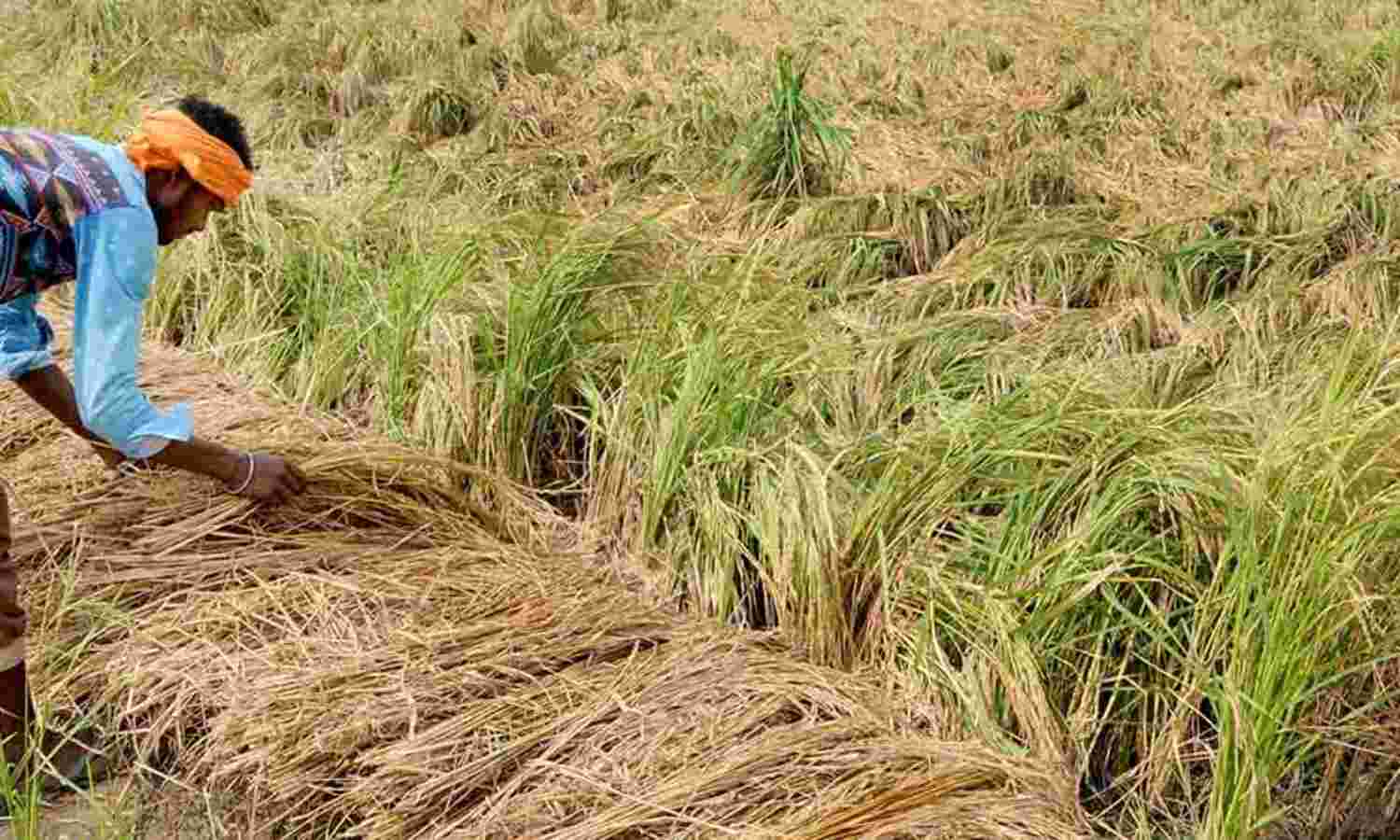Climate Change Could Reduce Farm Output, Increase Number Of India’s Hungry People: Report

New Delhi: In 2030, India’s agriculture output might be 7 points lower at 1.56 times the 2010 level against a potential 1.63 times without climate change, and the number of hungry 22.5% higher at 90.5 million against 73.9 million without climate change, according to an international food security report.
“Climate change is the most pressing issue facing [south Asia], given its implications for the food security of already vulnerable populations,” according to the 2018 Global Food Policy Report, launched on March 20, 2018, by the International Food Policy Research Institute, a global agriculture think-tank based in Washington DC, US.
“Increasing climatic variability, extreme weather events, and rising temperatures pose new challenges to ensuring food and nutrition security in the region,” the report said.
Concerns regarding the impact of climate change on India’s farm sector were also highlighted in India’s 2018 Economic Survey. With half of the country’s farms unirrigated, agriculture growth rates in India fluctuate a lot, according to the survey.
Between 2004 and 2016, India’s inflation-adjusted agricultural growth averaged 3.2% but the standard deviation--a measure of how much individual values deviate from the average--was 2.7 compared with 0.7 for China where growth averaged 4.4% in those years, the survey said.
A one-degree-Celsius rise in temperature reduces farmer incomes by 6.2% during the kharif (winter) season and 6% during rabi (monsoon) season in unirrigated districts, the survey said.
For every 100 mm drop in average rainfall, farmer incomes fall 15% during the kharif season and 7% during rabi, the survey said.
Temperatures in India are likely to rise by 3-4 degree Celsius by the end of the 21st century, according to the survey.
Extreme increases in temperature (rising to the top 20% of a district’s temperature range) and decline in rainfall (dropping to the bottom 20% of a district’s rainfall range) cause farm income losses of 15-18%, on average, in irrigated areas, and 20-25% in unirrigated areas, translating into Rs 3,600 a year for the median farm household, the survey said.
Extreme rainfall shocks increase the risk of severe floods. India could see a six-fold increase in population exposed to such floods by 2040--to 25 million people from 3.7 million facing the risk between 1971 and 2004--if no efforts are made to mitigate the circumstances, IndiaSpend reported on February 10, 2018.
We storified our tweets on the Global Food Policy Report:
International agri think-tank @IFPRI released Global Food Policy Report 2018, its seventh edition, on March 20, 2018. Follow this thread for highlights (1/13)
— IndiaSpend (@IndiaSpend) March 21, 2018
Foregrounding climate change as most pressing issue for S Asia, the report sees impact on India's agri output, per capita food intake & hungry popn in 2030, 2050 (2/13)
— IndiaSpend (@IndiaSpend) March 21, 2018
India’s agri output seen 7 points lower in 2030--at 1.56X of 2010 level against potential 1.63X without climate change; 15 points lower in 2050 at 2.01X against 2.16X (3/13)
— IndiaSpend (@IndiaSpend) March 21, 2018
Per capita food intake seen 17% lower in 2030--at 2,651 kcal/day against potential 2,697 kcal/day without climate change; 38% lower in 2050 at 2,883 kcal/day against 2,998 kcal/day (4/13)
— IndiaSpend (@IndiaSpend) March 21, 2018
No. of hungry people 22.5% higher in 2030--at 90.5mn against estimated 73.9mn without climate change; 0.2% higher in 2050 at 45mn against 44.9mn (5/13)
— IndiaSpend (@IndiaSpend) March 21, 2018
Indian govt’s agri spending is 6% of country’s agri GDP; China 23.6%, Afghanistan 4.6%, Bangladesh 8%, Bhutan 22%, Maldives 7%, Nepal 6.8%, Pakistan 1.6%, Sri Lanka 10.8% (6/13)
— IndiaSpend (@IndiaSpend) March 21, 2018
Indian govt spends 6% of its total expenditure on agriculture; China 9.3%, Afghanistan 2%, Bangladesh 11%, Bhutan 13%, Maldives 0.74%, Nepal 11%, Pakistan 2%, Sri Lanka 5.7% (7/13)
— IndiaSpend (@IndiaSpend) March 21, 2018
India spends 0.3% of agri GDP ($1,068 mn) on agri research: Nepal 0.28% ($17.8 mn), Bangladesh 0.37% ($78.2 mn), China 0.62% ($5,081.5 mn), Sri Lanka 0.34% ($21.6 mn) (8/13)
— IndiaSpend (@IndiaSpend) March 21, 2018
Indian govt’s per capita spending on agri in 2014 was $16; China $149.6, Afghanistan $8, Bangladesh $11, Bhutan $96, Maldives $19, Nepal $15.5, Pakistan $5, Sri Lanka $21 (9/13)
— IndiaSpend (@IndiaSpend) March 21, 2018
Land productivity in 2014 (production per hectare): India $1,488, Afghanistan $99, Bangladesh $2,648, China $1,058, Nepal $1,514, Pakistan $1,145, Sri Lanka $1,072 (10/13)
— IndiaSpend (@IndiaSpend) March 21, 2018
Labour productivity in 2014 (production per economically active person): India $968, Afghanistan $630, Bangladesh $753, China $2,593, Nepal $530, Pakistan $1,580, Sri Lanka $733 (11/13)
— IndiaSpend (@IndiaSpend) March 21, 2018
Agri total factor productivity--which measures efficiency as ratio of agri output to inputs--in 2010-14: India 2.7, Afghanistan 0.5, Bangladesh 0.7, Bhutan -0.9, China 1.7, Nepal -1.1, Pakistan 0.7, Sri Lanka -2.8 (12/13)
— IndiaSpend (@IndiaSpend) March 21, 2018
India accounted for 31% of growth in global agri total factor productivity in 2011-14, China 42%. You can read the full report here: https://t.co/NOUXkBD9zN (13/13)
— IndiaSpend (@IndiaSpend) March 21, 2018
(Vivek is an analyst with IndiaSpend.)
We welcome feedback. Please write to respond@indiaspend.org. We reserve the right to edit responses for language and grammar.


